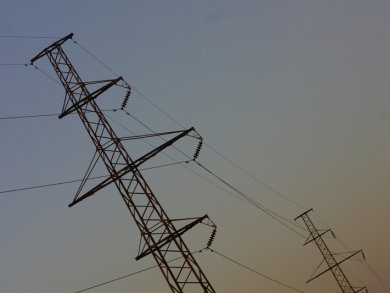Power Fluctuations and Supercapacitors
Conversion to renewable energy sources like wind and sun is only a question of time. Because wind and solar radiation vary in strength, the increase in renewable energy sources will cause significant fluctuations in the power grid. These must be absorbed by energy storage systems. This need could be fulfilled by a device known as a supercapacitor. John Q. Xiao and his team at the University of Delaware, Newark, USA, have now developed a new process for the production of electrodes made of nickel oxide/nickel nanocomposites for electrochemical supercapacitors. As the researchers report in the journal Angewandte Chemie, their process is simple and cost-effective, and could be scaled up for industry.
Supercapacitors combine the advantages of conventional capacitors and batteries: Like a capacitor, they can rapidly deliver high current densities on demand; like a battery, they can store a large amount of electrical energy. Supercapacitors consist of electrochemical double-layers on electrodes when they are wetted with an electrolyte. When a voltage is applied, ions of opposite polarity collect at both electrodes, forming whisper-thin zones of immobile charge carriers.
The problem is that most processes for the production of the required nanostructured electrodes are either too sensitive to work at an industrial scale or require the addition of substances that later interfere with the electrodes’ function. Sometimes the electrical resistance of the materials is too high. Xiao’s team has now developed a new process for the production of electrodes from a nickel oxide/nickel nanocomposite that can overcome these obstacles.
High Capacity Electrodes
The scientists first produce nickel nanoparticles. High-boiling polyalcohols, known as polyols, serve as the reaction medium. These cover the growth surfaces of the seed crystals, forming small spherical particles. The nanoparticles are then pressed together into pellets and deposited onto one side of a very thin platinum sheet, which later acts as the current collector. Annealing at 250 °C forms a layer of nickel oxide (NiO) around the pellet, which is the actual active layer of the supercapacitor. This results in compact, stable, highly porous Ni/NiO electrodes that do not require a support. Potassium hydroxide serves as the electrolyte.
During the charging process, OH– ions are bound to the NiO, giving off electrons. The process is reversed when the stored electrical energy is drawn off as current. Its high granularity gives the material a large inner surface area, providing good diffusion pathways for the ions. At the same time, the conductive network of the metal particles is maintained, which is important for high electrical conductivity. These characteristics are the reason for the surprisingly high capacity of the electrodes as well as their high power density and current density during the charge/discharge cycles.
- Supercapacitor Electrodes with High-Energy and Power Densities Prepared from Monolithic NiO/Ni Nanocomposites
Q. Lu, M. W. Lattanzi, Y. Chen, X. Kou, W. Li, X. Fan, K. M. Unruh, J. G. Chen, J. Q. Xiao,
Angew. Chem. Int. Ed. 2011.
DOI: 10.1002/anie.201101083



